These massive reptiles, the largest of all turtles, are quite imposing creatures! Leatherback sea turtles are named for their uniquely soft shells, which are quite different in contrast to other sea turtles’ hard shells. Read on to learn about the leatherback turtle.
Description of the Leatherback Sea Turtle
These sea turtles are large, tear shaped, gray reptiles. They have massive front flippers that can grow into an almost nine-foot wingspan. Instead of a shell, like other sea turtles, leatherbacks have thick leathery skin across their backs. They have seven ridges along the length of their “shells,” and these ridges run from the bottom of the neck all the way to the beginning of the tail.
Interesting Facts About the Leatherback Sea Turtle
These sea creatures are incredibly unique, with have a number of different traits that aid in their survival.
- Into the Maw – Leatherback sea turtles have a carpet of spines lining the insides of their throats. These spines face backward, so it is easy for food items to move down the throat, but very difficult for it to move back up! These spines, called “papillae,” are used to help keep their prey from escaping after capture.
- Jelly, it’s What’s for Dinner! – These massive reptiles feed almost exclusively upon jellyfish. This is why plastic pollution can be so dangerous. A floating plastic bag looks almost exactly like a jellyfish, and once consumed it can block a turtle’s digestive system. A digestive blockage results in a slow, painful death for the animal, unless it can be rescued. Sea turtles floating at the surface that do not dive when approached may be injured or ill. If you find a dead, sick, or injured sea turtle please call the 24-hour Wildlife Alert Number for the Fish and Wildlife Commission at 1-888-404-3922.
- Not So Egg-cellent – The rapid decline of leatherback sea turtle populations can be attributed to two main sources: fishery bycatch, and egg harvesting. In numerous cultures, sea turtle eggs are considered a delicacy or even an aphrodisiac. This has caused some leatherback subpopulations to be considered critically endangered.
- (Selective) Turtle Excluder Device – In an attempt to reduce the amount of bycatch occurring in commercial fisheries, Turtle Excluder Devices were invented. These T.E.D.s place an angled grate within the fishing net with an “escape hatch” above it. The smaller fish and shrimp are passed through the bars of the grate and into the rest of the net, but the turtles hit the grate and are pushed up and out the top. Unfortunately, leatherback sea turtles are so large that they frequently cannot fit through the escape hatch in the net, become entangled, and drown.
Habitat of the Leatherback Sea Turtle
Leatherback sea turtles prefer pelagic habitats, which are wide spans of open ocean far from shore. Because the sea turtles follow their jellyfish prey, they spend the daytime in deep waters, and return to the surface at night when the jellyfish drift back up the water column. Leatherback turtles have been recorded at depths below 1,000 meters!
Distribution of the Leatherback Turtle
Leatherback sea turtles can be found across most of the world’s oceans, and they migrate over extremely long distances. There are distinct populations in the Atlantic Ocean, the western Pacific Ocean, and the eastern Pacific Ocean.
Diet of the Leatherback Turtle
Leatherback sea turtles feed almost exclusively upon jellyfish. They migrate to follow the jellyfish, both up and down the water column and across the ocean! They have also been recorded feeding on squid and octopus, as well as soft-bodied invertebrates called “tunicates.”
Leatherback Turtle and Human Interaction
Humans have both a direct and indirect impact on the survival of the leatherback sea turtle. Unlike other sea turtle species, leatherback sea turtles taste relatively foul, and thus are not captured for their meat. Unfortunately, this doesn’t save them from other dangers.
As discussed previously, sea turtle eggs are harvested heavily by a number of different cultures. Egg collection in Malaysia and Thailand has caused a virtual population collapse. Leatherback turtle eggs are also collected in the Caribbean. The survival rate of hatchlings to sexual maturity is a meager 1%, meaning that every hatchling counts for the survival of the species.
While the sea turtles’ eggs are collected, adults are killed by accidental human interaction as well. Commercial fisheries inadvertently trap leatherback sea turtles in their nets as bycatch. Once entangled, the sea turtles drown because they cannot return to the surface to breathe. Sea turtles are also heavy victims of pollution, particularly plastic pollution. The turtles mistake floating plastic for their prey, jellyfish, and eat them. This ingestion can frequently cause intestinal blockage.
Leatherback Sea Turtle’s Importance to Humans
Because leatherback sea turtles are one of the few species that feeds exclusively on jellyfish, without them jellyfish populations would spiral out of control. Jellyfish feed upon larval fish, and when their population density is high, the larval fish cannot grow to sexual maturity.
Many of the larval fish that are consumed by jellyfish are species that we catch in commercial fisheries. This means that, if leatherback sea turtle populations shrink, jellyfish populations increase, and our commercial fish populations decrease.
Domestication
Leatherback sea turtles have not been domesticated in any way.
Does the Leatherback Turtle Make a Good Pet
As a protected species, it is highly illegal to have a leatherback sea turtle, or any sea turtle, as a pet.
Leatherback Sea Turtle Care
Keeping leatherback sea turtles would be highly difficult, because they feed almost exclusively on jellyfish. Obtaining large amounts of jellyfish can be quite difficult. They are also incredibly large when fully grown, meaning that they require more space than other sea turtles.
Behavior of the Leatherback Turtle
Leatherback sea turtles spend almost their entire lives at sea. They search for food in the open ocean, and only ever approach the shore to lay eggs. Mating occurs in the water, and the females only return to land in order to lay their eggs.
Reproduction of the Leatherback Sea Turtle
Female leatherback sea turtles mate once every two or three years. The females return to the beach that they were hatched on, and climb up the beach at night to avoid predators. They dig a nest, inside which they lay approximately 110 eggs.
The females then cover their nests with sand, and drag themselves back to the ocean. After about two months, the eggs hatch, and the baby turtles must dig themselves out of the sand and run for the ocean. Only 1% of turtle hatchlings will survive long enough to reproduce themselves.
Beliefs About the Leatherback Sea Turtle
Leatherback turtles are a symbol in some native cultures. The Seri people of Mexico believe that the leatherback sea turtle is one of the five main creators of the world. These people devote ceremonies to the sea turtles, and when they noticed the decline of the sea turtle populations they dedicated a conservation movement. The Groupo Tortugero Comaac uses ecological knowledge and modern technology to manage sea turtle populations.



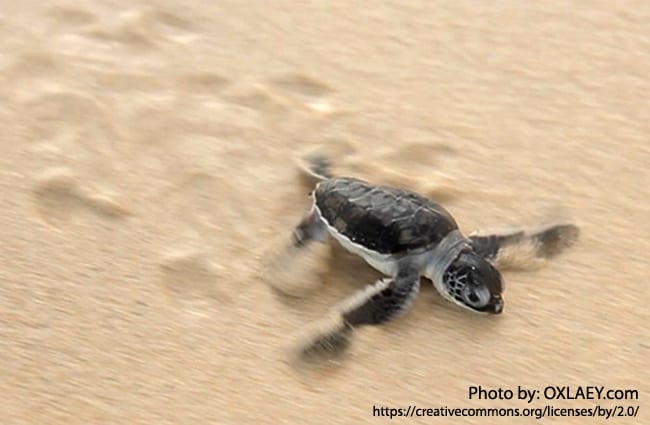
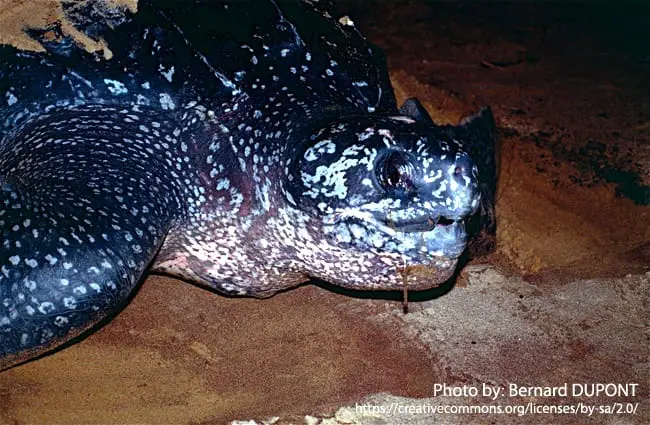
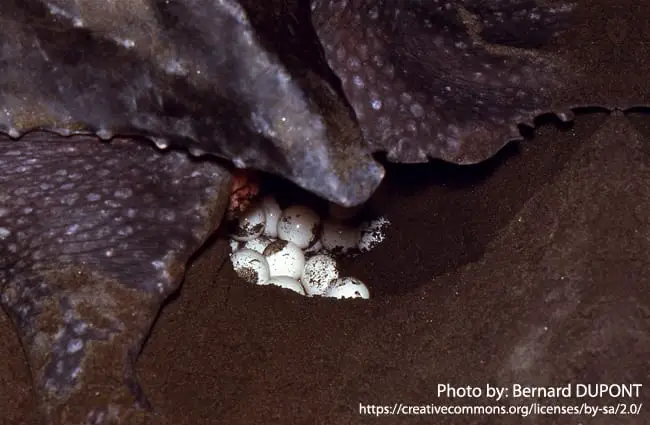
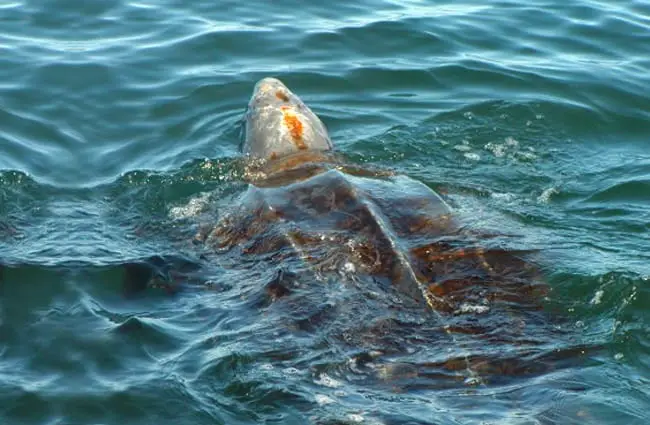
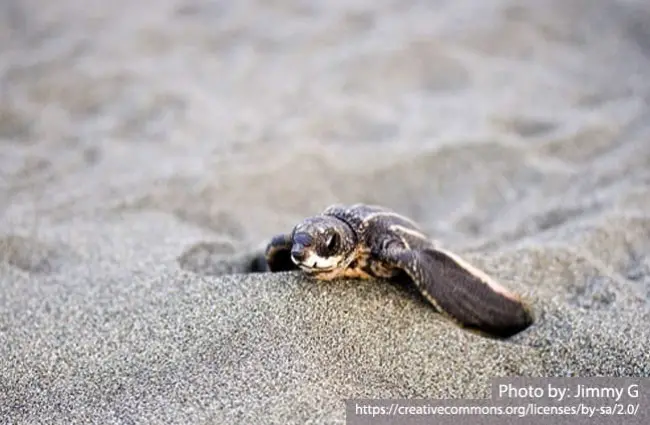
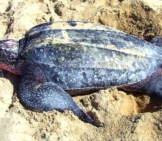
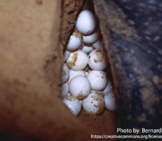
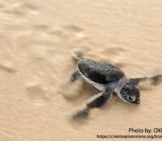




![Red Angus Closeup of a beautiful Red Angus cowPhoto by: U.S. Department of Agriculture [pubic domain]https://creativecommons.org/licenses/by/2.0/](https://animals.net/wp-content/uploads/2020/03/Red-Angus-4-238x178.jpg)












![Red Angus Closeup of a beautiful Red Angus cowPhoto by: U.S. Department of Agriculture [pubic domain]https://creativecommons.org/licenses/by/2.0/](https://animals.net/wp-content/uploads/2020/03/Red-Angus-4-100x75.jpg)

